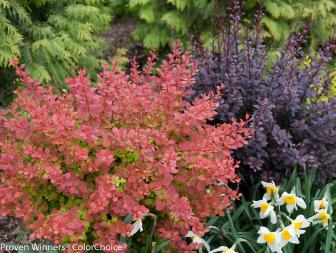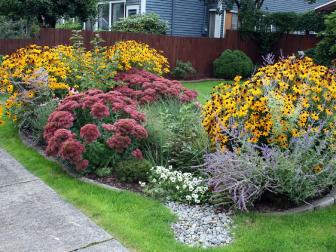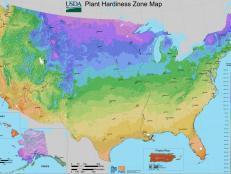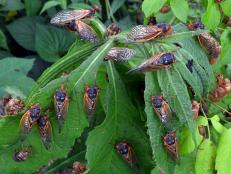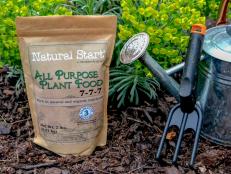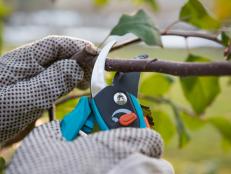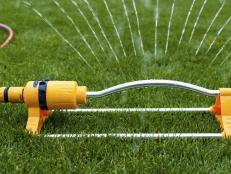How to Design a Great Yard With Landscape Plants
Take the guesswork out of choosing landscaping plants by following "right plant, right place" garden design.
Give your landscape an upgrade by embracing the concept of "right plant, right place." When you choose and place plants carefully in your yard, you can design a low-maintenance landscape packed with stylish design. It all starts with choosing the right landscaping plants.
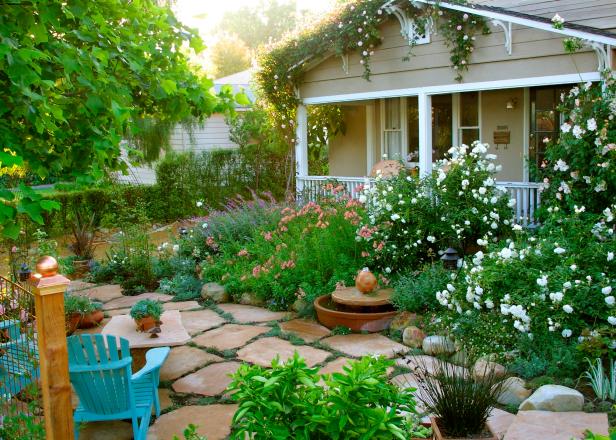
Holly Lepere, Lepere Studio
When you choose and place plants carefully in your yard, you can design a low-maintenance landscape packed with stylish design.
For instance, you can probably guess that you don’t want to place a waterlily in a desert garden. That’s a recipe for disaster. But the same is true for other types of plants. Many prairie plants won’t thrive in waterlogged soil, and many rock garden plants keel over if they’re tucked into rich, loamy garden beds. How do you know if a plant will thrive in your landscape? It all boils down to right plant, right place.
By carefully analyzing your landscape’s environmental conditions — its microclimate, planting zone, sun and shade patterns, and soil type, you can select plants according to their ability to grow well in a specific spot. This gardening philosophy plays matchmaker in the landscape, placing plants where they’ll naturally thrive — with minimal input from you. The result is a landscape design that’s a breeze to maintain.
Benefits of Right Plant, Right Place
When you put the right plant in the right place, giving it nearly ideal growing conditions, several things happen:
- Plants establish quickly, growing and bulking up.
- Plants produce healthy root systems and steady top growth.
- Plants withstand attack by insects and diseases. Plants in the wrong place have a compromised immune system, so to speak, and when a problem comes, they’re weak and succumb easily to attack.
The biggest investment you’ll make when you tackle right plant, right place gardening occurs before you stick a trowel into the soil. Planning is the key to success with this concept. By investing more time before planting, you’ll invest less time maintaining plantings. You’ll be gardening smarter and greener — and saving money, too.
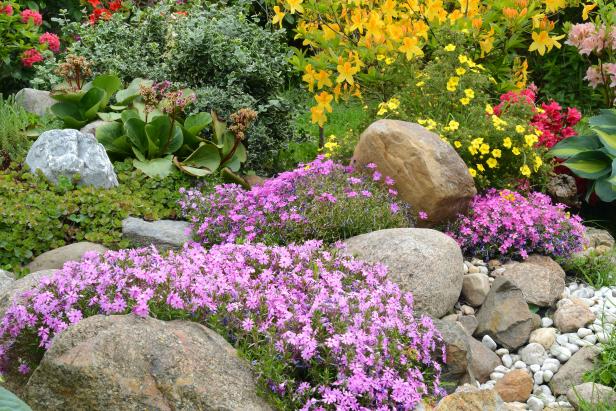
Shutterstock/K.U. Haessler
Plants placed in the right growing conditions will establish quickly.
Start With Hardiness Zone
The USDA Hardiness Zone reveals if plants will survive winters in your region. Many gardeners push the envelope on the hardiness zone and grow plants from one zone warmer. They tuck these questionable survivors into a sheltered backyard or maybe in a planting bed near a southern wall of their home, where temperatures don’t fall quite as far in winter. For sure success, though, fill a landscape design using plants that are hardy to your zone. Not sure what your zone is? Learn here.
Plant Hardiness Zones
Learn more about the USDA Plant Hardiness Zone Map and how to use it.
Inventory Light
Some plants need full sun to thrive; others require shade. You’ll get the best gardening results when you know what kind of light your yard offers. To figure this out, watch the sun as it hits your landscape areas. Ideally, check it every hour — and make notes. Do this in different seasons, too, if you’re planning that far out. By doing this, you’ll know if your yard has full sun, part shade or shade, the terms you’ll see on plant tags.
Place a plant outside its ideal light condition, and the results will vary. Full sun plants will frequently flower less often and get taller in shade as they reach for sunshine. Plants that are aggressive growers in full sun might become tame and controllable in shade. Many shade plants, if placed in sunny conditions, burn and die.
14 Low-Maintenance Plants for Easy Landscaping 30 Photos
Consider these easy-to-grow shrubs, trees, and perennials to create a worry-free foundation in your landscape. For each, we’ve included planting, watering, fertilizing, and pruning tips for every gardening zone.
Consider Soil
Plants need specific soil types to grow their best. The great thing about soil is that you can change it by adding amendments. For instance, you can make clay soil, which has slow drainage, more porous and faster draining by adding organic matter, like compost, composted manure, fir bark fines or other locally available material. Or you can create a completely different soil type in your landscape by building and filling raised beds, which also add some nifty hardscaping to the scene.
When you place the wrong plant in the wrong kind of soil, you’ll get mixed results. Worst case scenario, the plant dies. Best case, it survives, but with lackluster results. Each soil type accommodates a different palette of plants. Before you embark on creating wholesale change in soil, research the kinds of plants that grow in the soil you have. You might find you can design an eye-catching landscape with the soil you have.
How to Prepare Soil for a Garden
Learn how to thoroughly prepare soil for a successful garden.
Think About Water
Group plants that have similar water needs to make irrigation easier. Place plants with the highest water needs closest to the house and hose bibs and the least thirsty plants toward the perimeter of the garden.
This method of garden design is referred to as “hydrozoning.” This technique saves money in installation and water costs because it requires a less extensive irrigation set-up. Hydrozoning also helps save money on energy bills. Because plants closer to the house are watered more often, that soil contains more water, which in turns creates a higher level of evaporative cooling in summer. This helps make the house and outdoor living areas cooler.
10 Rain Garden Design Ideas 10 Photos
Want to do your bit to help save the planet? Consider adding a rain garden to your yard. Check out these designs for inspiration.
Size Things Up
Plant tags state how large plants grow under ideal circumstances. Plan for this contingency and site plants accordingly, giving them ample elbow room for spreading and plenty of head space for upward mobility.
In the right place, tall plants can form a privacy screen or stage a striking backdrop for other plantings. In the wrong place, they’re an eyesore. Conversely, plants that are too small can be dwarfed by surrounding plantings or hardscape and disappear from view.
45 Creative Ways to Add Backyard Privacy 45 Photos
Looking for a way to bring privacy to your backyard without taxing your budget? Try one of these clever solutions for a more secluded outdoor space.
Embrace Color & Texture
As you select plants, consider leaf and flower color — and how they will blend or clash with existing landscape and hardscaping. An easy way to succeed with color is to design with hues from the same color family. This works especially well in front yard gardens, where you want to make a great first impression on guests and passersby.
Another goofproof method is scattering clumps of the same color throughout planting areas, creating what’s called a color echo. Don’t forget to study bloom time and plan for color throughout the gardening season. Add in contrasting leaf and plant textures to stir some drama in the landscape.
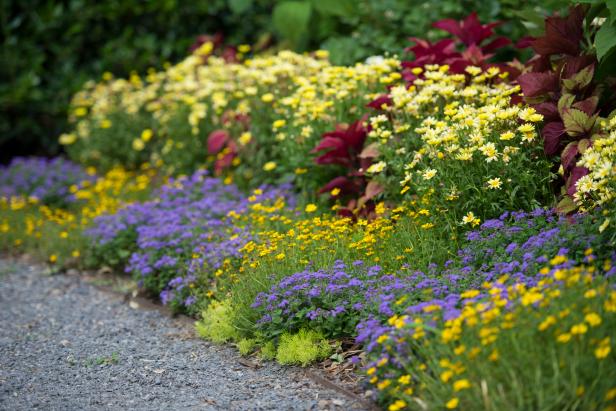
ProvenWinners.com
This colorful annual border boasts classic design tricks, including arranging plants short to tall and repeating color blocks.
Outsmart Wildlife
Most gardeners grapple with some kind of critter issue. Whether it’s tunneling voles, hopping rabbits or strolling deer, wildlife can make short work of any landscape design, transforming gardening efforts into stems and stubs. While you may not be able to win every battle, you can outsmart the animals. Installing hardscaping, like a fence, provides a physical barrier that can limit wildlife’s access to gardening areas. But in formal front yards or excessively large backyards, a fence isn’t always practical or affordable.
You can also outwit critters by choosing plants they dislike. If rabbits devour your coralbells (even though they’re not supposed to eat those), ditch the coralbells for something local bunnies find less palatable. In the long run, you’ll save yourself hours of aggravation and likely a wad of cash that you would have spent on replacement plants.
30 Deer-Resistant Plants 31 Photos
Hungry deer tend not to bother these flowers and plants.
Shopping for Landscape Plants
Your local garden center is where you’ll find the landscaping plants that are best suited for your yard’s growing conditions. Most plants for sale are labeled with a tag that tells you how much sunshine, shade and water they need, along with the hardiness zone where they thrive.
You might even divide your wish list into categories — such as flowering plants, shrubs, trees, and grasses —to create an overall design with complementary plantings that offer multi-season interest.








